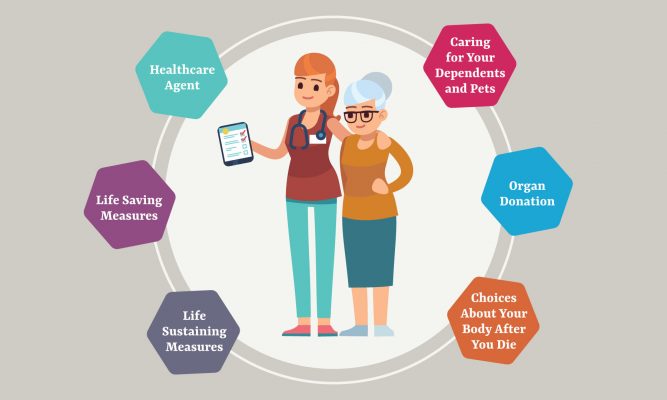Key Takeaways
- A comprehensive strategy for overseeing long-term care and wellness is life care planning.
- It entails evaluating present and future requirements, frequently encompassing personal, financial, and medical demands.
- More precise and efficient life care plans are ensured by using data and professional advice.
- This handbook will explain the fundamentals of life care planning and provide helpful tips for carrying it out.
What is Life Care Planning?
Life care planning is a strategic and holistic approach designed to manage the long-term care and wellbeing of individuals, often involving the collaboration of a life care planning expert. This comprehensive process includes a thorough assessment of current needs and anticipates future requirements, covering medical, financial, and personal aspects. By integrating these diverse elements, life care planning ensures that individuals and their families can navigate complex care scenarios with confidence and preparedness.
The primary benefit of life care planning is that it creates a structured and customized plan tailored to the individual’s specific needs. This proactive planning encompasses medical evaluations, financial strategies, and personal goals. The customized nature of these plans means that they are capable of addressing the unique circumstances and preferences of each individual, making them invaluable tools for securing long-term wellbeing and peace of mind.
The Core Elements of a Life Care Plan
A life care plan is a comprehensive strategy that includes a medical evaluation, financial planning, and personal and social considerations. The medical evaluation involves assessing an individual’s current health conditions, potential future complications, and anticipated course of illnesses. This ensures appropriate medical care and accommodations are in place to manage an individual’s health effectively over time. Financial planning involves budgeting for medical treatments, therapies, income management, investment strategies, and long-term financial sustainability to ensure optimal care resources are always available. Proper financial planning includes setting up emergency funds, exploring insurance options, and employing financial tools to protect against future uncertainties. Finally, personal and social considerations include living arrangements, support networks, and social activities that contribute to an individual’s overall quality of life. This balances medical and financial requirements with everyday happiness and fulfillment, ensuring continuity in social relationships, hobbies, and community involvement.
Steps to Creating an Effective Life Care Plan
An effective life care plan involves:
- Conducting an initial assessment to identify an individual’s current and potential future needs.
- Setting realistic goals.
- Determining the best methods to achieve these objectives.
This assessment should consider medical history, health status, lifestyle preferences, and financial resources. Setting clear, realistic goals ensures the plan remains focused and attainable over the long term. Consulting with experts, such as doctors, financial advisors, and social workers, ensures comprehensive coverage of all aspects, from medical care to financial management. This multidisciplinary approach enhances the plan’s effectiveness and adaptability to changing circumstances. Regular review and adjustment of the plan are crucial to ensure the plan remains relevant and practical, addressing new challenges and adapting to changing conditions. Regular reviews can identify gaps, assess the effectiveness of current strategies, and incorporate new goals or resources as needed, ensuring continuous alignment with the individual’s needs and preferences.
Tools and Resources for Life Care Planning
Technology has revolutionized life care planning by offering various tools and resources to streamline the process. Healthcare apps and financial planning software can monitor health conditions, manage medication, and schedule appointments, ensuring timely interventions. These apps can remind users to take their medications, track vital signs, and communicate directly with healthcare providers. Financial planning software and calculators simplify the financial aspects of life care planning, assisting in budgeting, forecasting future expenses, and managing investments. These tools include expense tracking, asset management, and retirement planning, ensuring a sustainable financial plan that supports long-term care needs.
Community and online support groups provide practical advice, emotional support, and valuable resources for individuals and families involved in life care planning. These networks offer a platform to share experiences and solutions, making the journey less isolating and more manageable. Being part of a support group can offer moral encouragement, novel ideas, and access to a wealth of shared knowledge and resources.
Regular reviews and updates are crucial to maintain the relevance and effectiveness of a life care plan. Scheduling periodic reviews ensures the plan adapts to any significant life changes, preventing gaps in care or support. Regularly reviewing and making necessary adjustments can significantly enhance the utility of the plan.
Conclusion: Taking the First Steps in Life Care Planning
Starting a life care plan may seem daunting, but it is a crucial step toward ensuring a high quality of life and peace of mind. Begin with an initial assessment, consult with the necessary experts, and develop a personalized plan that addresses medical, financial, and personal needs. Remember to review and update your plan regularly, adjusting it as life circumstances change. Proactive life care planning can make all the difference in maintaining health, happiness, and security for the future.

Asad Arshad, a prolific author of over 50+ websites across various niches, is open to collaboration opportunities. 🌐 For guest posts, reach out to him to benefit from his vast expertise and connect with a diverse audience. 📬




